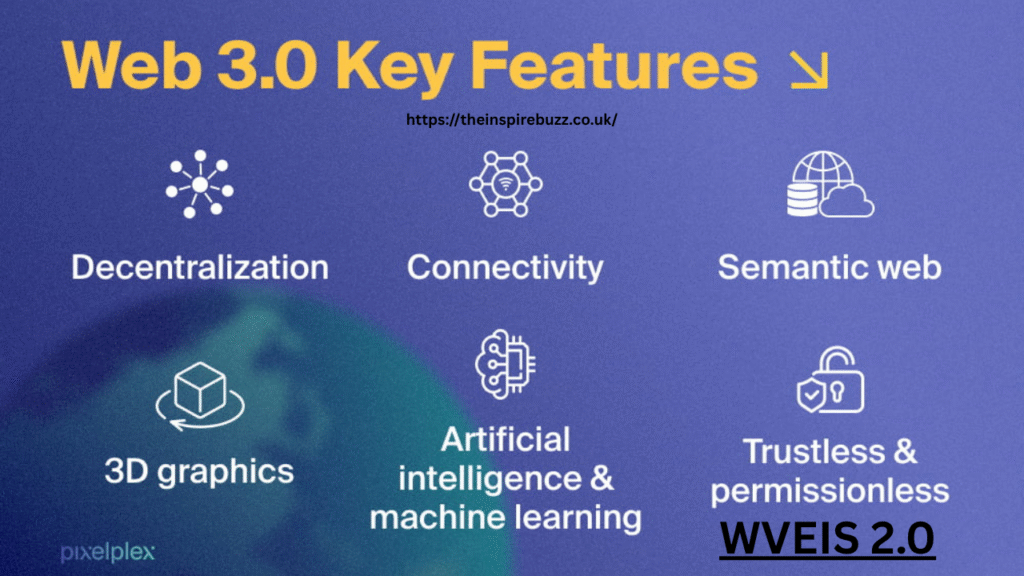Revolutionizing Education Data Management A Deep Dive into WVEIS 2.0

In an era where data drives nearly every aspect of modern life, education is no exception. Managing student records, tracking academic progress, and coordinating school operations demand an integrated and efficient system. Enter WVEIS 2.0 — the next generation of the West Virginia Education Information System. Designed to address the limitations of its predecessor, WVEIS 2.0 promises a more dynamic, scalable, and user-friendly platform for all education stakeholders.
With education systems across the United States moving toward digitization, WVEIS 2.0 represents a critical step in West Virginia’s efforts to modernize its infrastructure. This article explores the evolution of WVEIS, highlights the core features of the 2.0 version, examines its impact on various stakeholders, and looks at how it compares to other state systems. Whether you’re a teacher, parent, administrator, or policymaker, understanding the transformation brought about by WVEIS 2.0 is essential.
The Evolution from WVEIS to WVEIS 2.0

Originally launched in the 1990s, the West Virginia Education Information System (WVEIS) was built to centralize and standardize student information across the state. While groundbreaking at the time, the system eventually lagged behind due to aging architecture, limited adaptability, and poor integration with modern educational technologies. Users often faced sluggish interfaces and cumbersome workflows, hindering their ability to extract timely, actionable data.
Recognizing these shortcomings, state education officials initiated the development of WVEIS 2.0. The goal was to reimagine the original system using modern technology while retaining its foundational principles. The push for this transition gained momentum in the mid-2010s, with stakeholder feedback playing a pivotal role in shaping the new platform.
The upgrade wasn’t just about aesthetics or speed; it was a complete overhaul of data management. WVEIS 2.0 incorporates cloud-based infrastructure, modular design, and real-time analytics to meet the evolving needs of West Virginia’s schools. With a phased implementation strategy, the state ensured that disruptions were minimized and end-users were properly trained.
Key Features and Functionalities of WVEIS 2.0

At the heart of WVEIS 2.0 is a cloud-native architecture that allows seamless data access from anywhere, anytime. Unlike the legacy system that depended on outdated mainframes, WVEIS 2.0 is hosted on secure cloud servers, reducing latency and ensuring high availability. This structure also facilitates future scalability, ensuring that the system can grow alongside the state’s educational needs.
The user interface has been redesigned with usability in mind. Teachers, administrators, and clerical staff now benefit from intuitive dashboards, drag-and-drop tools, and customizable reporting modules. Navigation is simplified, and redundant steps have been eliminated, saving valuable time.
Perhaps one of the most notable improvements is real-time data reporting. Whether tracking student attendance, behavior, or performance, WVEIS 2.0 offers instant access to critical metrics. This supports more informed decision-making and immediate intervention strategies when necessary.
Integration capabilities are also central to the system’s appeal. WVEIS 2.0 can now synchronize with platforms such as Schoology, Google Classroom, and various student assessment tools. These integrations make it a comprehensive hub for education management, rather than a standalone database.
Benefits for Stakeholders
For Educators and Administrators
WVEIS 2.0 simplifies the administrative burden often placed on educators. Automated scheduling, real-time attendance tracking, and digital gradebooks allow teachers to focus more on instruction and less on paperwork. Additionally, administrators gain access to robust analytics dashboards that can identify trends and outliers in student performance, helping them allocate resources more effectively.
For Parents and Students
The improved transparency brought by WVEIS 2.0 benefits families as well. Parents can log in to view grades, attendance, and disciplinary actions. They can also communicate directly with teachers and staff through integrated messaging tools. This engagement fosters a stronger school-home connection, which research shows improves student outcomes.
For Policy Makers and District Leaders
At the state and district level, WVEIS 2.0 delivers aggregated data in digestible formats. Leaders can track district-wide performance, monitor equity initiatives, and forecast enrollment trends. This empowers them to make policy decisions based on accurate, real-time information rather than outdated or incomplete reports.
Implementation Across West Virginia
Rolling out a statewide education data system is no small feat. WVEIS 2.0 was introduced through a phased implementation process, beginning with pilot programs in select districts. Feedback from these initial users was used to refine the platform before expanding its reach.
Training was a crucial component of this rollout. The West Virginia Department of Education provided online modules, in-person workshops, and a dedicated help desk to support users during the transition. While there were initial hurdles—particularly related to data migration and user resistance—the state’s strategic approach allowed most schools to adopt the new system smoothly.
Early adopters reported marked improvements in workflow efficiency and data quality. Some districts even developed localized enhancements and shared them with other regions, highlighting the collaborative potential of the new system.
How WVEIS 2.0 Compares to Other Statewide Education Systems
Compared to systems like Texas Student Data System (TSDS) or California’s CALPADS, WVEIS 2.0 holds its own in terms of functionality and user-centric design. While larger states may have more resources, West Virginia’s focus on simplicity and efficiency allows it to implement meaningful changes faster and more effectively.
One of the standout features of WVEIS 2.0 is its seamless integration with third-party tools—a capability that many legacy systems in other states lack. Moreover, West Virginia’s commitment to including local educators in the system design process sets a precedent for participatory system development.
By focusing on modularity, WVEIS 2.0 also allows schools to adapt features to their specific needs without overhauling the entire system. This flexibility gives it an edge over more rigid systems used in other states.
The Future of WVEIS 2.0
Looking ahead, the roadmap for WVEIS 2.0 includes the integration of artificial intelligence to support predictive analytics. For instance, the system may soon be able to flag at-risk students based on behavioral and performance data, allowing for proactive interventions.
Other anticipated features include mobile access for parents and students, voice-assisted commands, and enhanced personalization for different types of users. The state is also exploring partnerships with ed-tech innovators to keep the platform at the cutting edge of technology.
The long-term vision is to transform WVEIS 2.0 into a fully adaptive learning and management ecosystem—one that doesn’t just track progress but actively contributes to academic success.
Conclusion
WVEIS 2.0 is more than just a software upgrade—it’s a bold step toward transforming how education is managed, monitored, and improved across West Virginia. By focusing on user experience, data accessibility, and future-ready features, the platform is setting a new standard for state-level educational information systems.
As technology continues to evolve, so too must the systems that support our schools. With WVEIS 2.0, West Virginia has proven that with the right vision, collaboration, and commitment, educational innovation is not only possible—it’s achievable and impactful.
FAQs
What does WVEIS stand for?
WVEIS stands for West Virginia Education Information System.
How do educators log in to WVEIS 2.0?
Educators can log in through the state-provided portal using secure credentials issued by their district.
Is WVEIS 2.0 accessible to parents and students?
Yes, the system offers a parent and student portal for tracking grades, attendance, and communication.
What kind of training is provided for WVEIS 2.0 users?
Training includes online tutorials, in-person workshops, user manuals, and dedicated support lines.
How secure is the student data in WVEIS 2.0?
WVEIS 2.0 complies with FERPA and uses encrypted cloud storage to protect all sensitive information.



